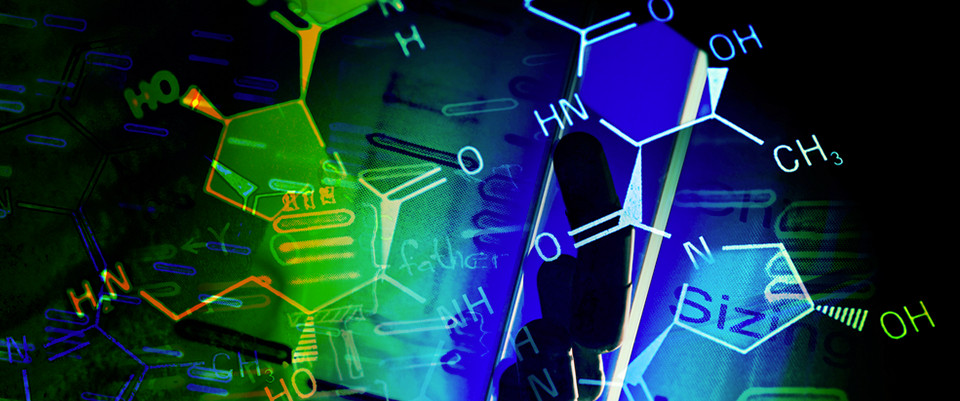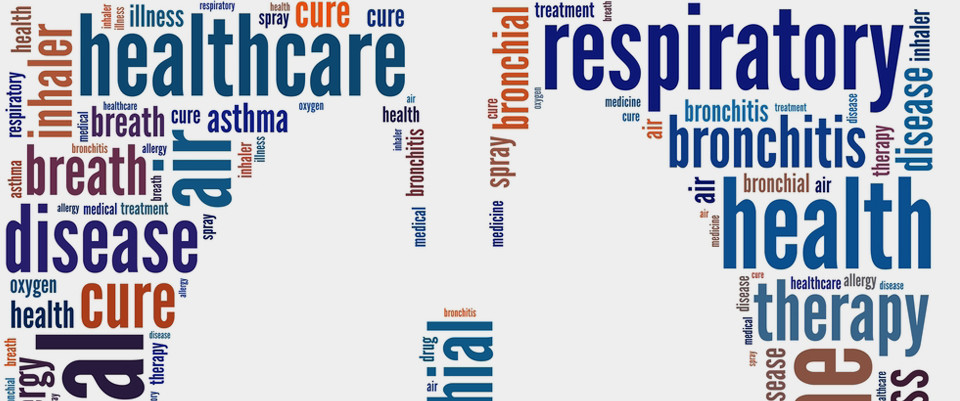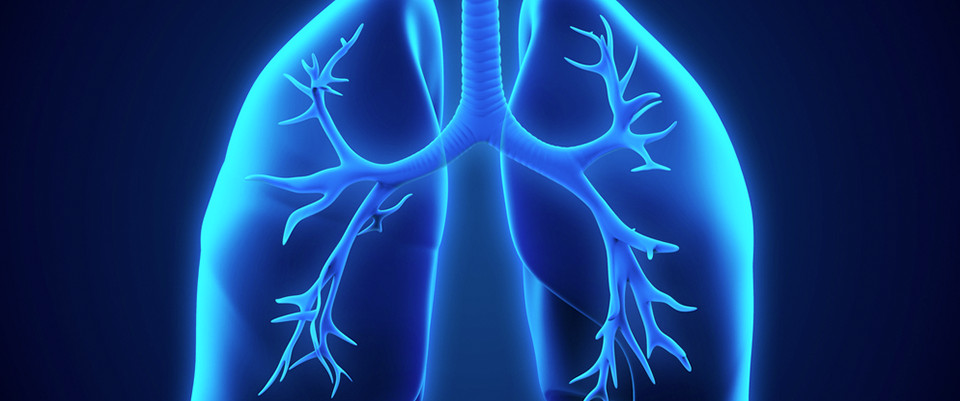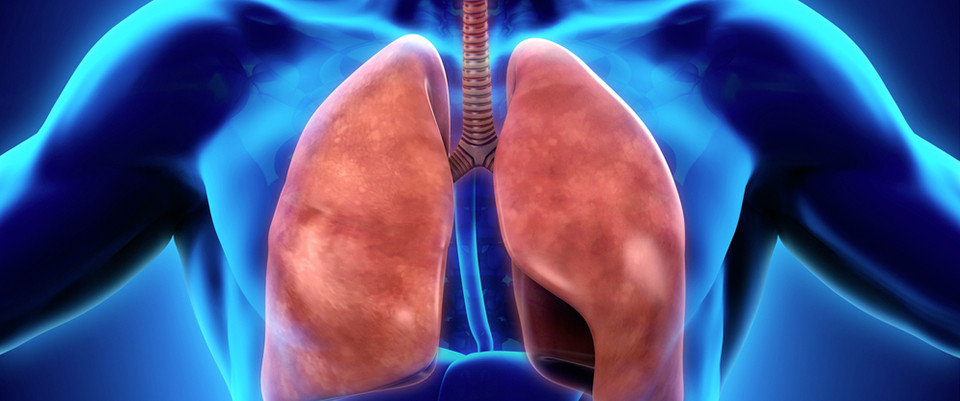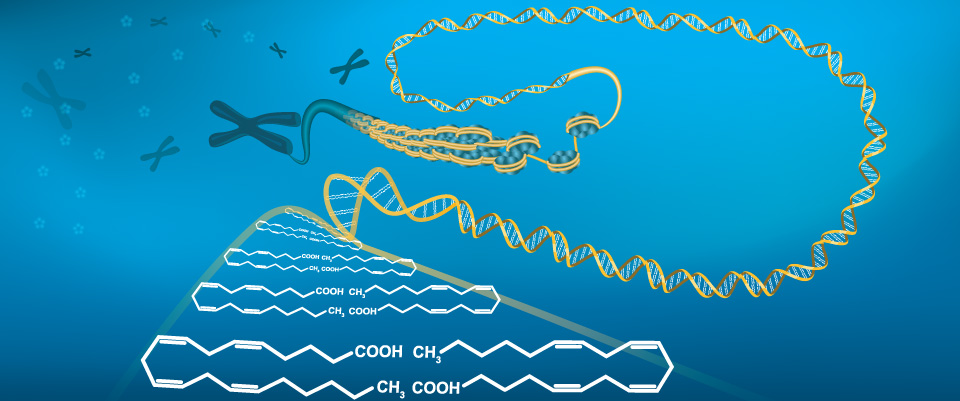PubMed
Identifying early predictive and diagnostic biomarkers and exploring metabolic pathways for sepsis after trauma based on an untargeted metabolomics approach
Sci Rep. 2025 Apr 8;15(1):12068. doi: 10.1038/s41598-025-92631-3.ABSTRACTSystemic inflammatory response syndrome (SIRS) and organ dysfunction make it challenging to predict which major trauma patients are at risk of developing sepsis. Additionally, the unclear pathogenesis of sepsis after trauma contributes to its high morbidity and mortality. Identifying early predictive and diagnostic biomarkers, as well as exploring related metabolic pathways, is crucial for improving early prevention, diagnosis, and treatment. This study prospectively analyzed plasma samples from patients with severe trauma collected between March 2022 and November 2023. Trauma patients were divided into two groups based on whether they developed sepsis within two weeks: the TDDS group (trauma patients who did not develop sepsis) and the TDS group (trauma patients who did develop sepsis). Plasma samples from the TDS group were collected at the time of sepsis diagnosis (Sepsis group). Metabolite concentrations were measured using ultrahigh-performance liquid chromatography-tandem mass spectrometry (UHPLC-MS/MS) through untargeted metabolomics. From the differential metabolites between the TDS and TDDS groups, we identified five significant metabolites (all area under the curve (AUC) ≥ 0.94) as early predictive biomarkers for sepsis after trauma: (1) docosatrienoic acid, (2) 7-alpha-carboxy-17-alpha-carboxyethylandrostan lactone phenyl ester, (3) sphingomyelin (SM) 8:1;2O/26:1, (4) N1-[1-(3-isopropenylphenyl)-1-methylethyl]-3-oxobutanamide, and (5) SM 34:2;2O. Furthermore, five significant metabolites (all AUC ≥ 0.85) were identified as early diagnostic biomarkers from the comparison between the TDS and TDDS groups: (1) lysophosphatidylcholine (LPC) O-22:1, (2) LPC O-22:0, (3) uric acid, (4) LPC O-24:2, and (5) LPC 22:0-SN1. 26 metabolites shared between two comparisons (TDS vs. TDDS and sepsis vs. TDS) were identified. Of which, 19 metabolites belong to lipid metabolism. The top three metabolic pathways related to sepsis after trauma under the impact of severe trauma were: (1) glycerophospholipid metabolism, (2) porphyrin metabolism, and (3) sphingolipid metabolism. The top three metabolic pathways related to sepsis after trauma under the impact of infection were: (1) caffeine metabolism, (2) biosynthesis of unsaturated fatty acids, and (3) steroid hormone biosynthesis. Our study identified early predictive and diagnostic biomarkers and explored metabolic pathways related to sepsis after trauma. These findings provide a foundation for future research on the onset and development of sepsis, facilitating its early prevention, diagnosis, and treatment based on specific metabolites and metabolic pathways.PMID:40199964 | DOI:10.1038/s41598-025-92631-3
iPSC-Derived Liver Organoids as a Tool to Study Medium Chain Acyl-CoA Dehydrogenase Deficiency
J Inherit Metab Dis. 2025 May;48(3):e70028. doi: 10.1002/jimd.70028.ABSTRACTMedium chain acyl-CoA dehydrogenase deficiency (MCADD) is an inherited metabolic disease, characterized by biallelic variants in the ACADM gene. Interestingly, even with the same genotype, patients often present with very heterogeneous symptoms, ranging from fully asymptomatic to life-threatening hypoketotic hypoglycemia. The mechanisms underlying this heterogeneity remain unclear. Therefore, there is a need for in vitro models of MCADD that recapitulate the clinical phenotype as a tool to study the pathophysiology of the disease. Fibroblasts of control and symptomatic MCADD patients with the c.985A>G (p.K329E) were reprogrammed into induced pluripotent stem cells (iPSCs). iPSCs were then differentiated into hepatic expandable organoids (EHOs), further matured to Mat-EHOs, and functionally characterized. EHOs and Mat-EHOs performed typical hepatic metabolic functions, such as albumin and urea production. The organoids metabolized fatty acids, as confirmed by acyl-carnitine profiling and high-resolution respirometry. MCAD protein was fully ablated in MCADD organoids, in agreement with the instability of the mutated MCAD protein. MCADD organoids accumulated medium-chain acyl-carnitines, with a strongly elevated C8/C10 ratio, characteristic of the biochemical phenotype of the disease. Notably, C2 and C14 acyl-carnitines were found decreased in MCADD Mat-EHOs. Finally, MCADD organoids exhibited differential expression of genes involved in ω-oxidation, mitochondrial β-oxidation, TCA cycle, and peroxisomal coenzyme A metabolism, particularly upregulation of NUDT7. iPSC-derived organoids of MCADD patients recapitulated the major biochemical phenotype of the disease. Mat-EHOs expressed relevant pathways involved in putative compensatory mechanisms, notably CoA metabolism and the TCA cycle. The upregulation of NUDT7 expression may play a role in preventing excessive accumulation of dicarboxylic acids in MCADD. This patient-specific hepatic organoid system is a promising platform to study the phenotypic heterogeneity between MCADD patients.PMID:40199742 | DOI:10.1002/jimd.70028
Overview: Spatial Metabolomics Review Series
Semin Nephrol. 2025 Apr 7:151576. doi: 10.1016/j.semnephrol.2025.151576. Online ahead of print.NO ABSTRACTPMID:40199630 | DOI:10.1016/j.semnephrol.2025.151576
Investigating the mechanism of action of Qianlie Jindan tablets in rats with chronic prostatitis using non-targeted metabolomics
J Chromatogr B Analyt Technol Biomed Life Sci. 2025 Apr 3;1257:124577. doi: 10.1016/j.jchromb.2025.124577. Online ahead of print.ABSTRACTOBJECTIVE: To explore the mechanism of action of Qianlie Jindan tablets by analyzing the metabolomic changes in prostate tissues obtained from rats with chronic prostatitis/chronic pelvic pain (CP/CPPS).MATERIALS AND METHODS: Male SD rats were randomly divided into three groups: blank control (BC), model control (MC), and treatment (QLJD) groups, with 10 rats in each group. The model was induced using Complete Freund's adjuvant (CFA) and prostate protein purification solution, and the corresponding drug intervention was given. At the end of the experiment, pathological changes in the prostate tissues were observed using hematoxylin and eosin (HE) staining. Differential metabolites were determined by ultra-high-performance liquid chromatography and tandem electrostatic field orbital trap mass spectrometry (UHPLC-Q Exactive HFX), and Kyoto Encyclopedia of Genes and Genomes (KEGG) pathway annotation was performed. The results were then verified by quantitative real-time polymerase chain reaction (PCR).RESULTS: QLJD reversed the histopathological damage induced by CP/CPPS. Metabolomics analysis showed that UDP-GlcNAc was the key differential metabolite, and can activate the PI3K/AKT/mTOR pathway. The PCR analysis revealed that the mRNA expression levels of PI3K, AKT and mTOR in the MC group were significantly lower than those in the BC group (P < 0.05). These parameters were increased in the QLJD group compared to the MC group (P < 0.05), validating our metabolomics results.CONCLUSION: QLJD exerts a therapeutic effect on CP/CPPS by activating the PI3K/AKT/mTOR pathway through the regulation of UDP-GlcNAc levels.PMID:40199180 | DOI:10.1016/j.jchromb.2025.124577
Microplastics impacts the toxicity of antibiotics on Pinellia ternata: An exploration of their effects on photosynthesis, oxidative stress homeostasis, secondary metabolism, the AsA-GSH cycle, and metabolomics
Plant Physiol Biochem. 2025 Apr 3;223:109883. doi: 10.1016/j.plaphy.2025.109883. Online ahead of print.ABSTRACTAntibiotics and microplastics (MPs) are two new types of contaminants that are widely existent in agricultural systems. MPs could act as carriers of antibiotics, and affect the bioavailability and degradation of antibiotics, causing a combined effect on plant growth. The aim of the present experiment was to explore the effects of the treatments of oxytetracycline (OTC, 100 mg kg-1) alone and in combination with polyethylene microplastics (PE-MPs, 0.1 %, 1 %, 3 %) on P. ternata phenotypic parameters, photosynthetic system, reactive oxygen species (ROS), secondary metabolism, ascorbate-glutathione (AsA-GSH) cycle, and metabolomics. Results demonstrated that exposure to OTC alone reduced P. ternata fresh weight by causing oxidative damage, reducing photosynthetic pigment and secondary metabolite contents. OTC + MP0.1 group alleviated OTC stress to P. ternata by increasing photosynthetic pigment contents and antioxidant enzyme activities. OTC + MP3 group significantly reduced plant height of P. ternata. In addition, metabolomics analysis showed that OTC treatment interfered with pantothenate and CoA biosynthesis. The OTC + MP0.1 group activated pantothenate and CoA biosynthesis and glutathione metabolism. The significance of this study lies in clarifying the effects of OTC on medicinal plants and whether its influence mechanism is regulated by the concentration of MPs.PMID:40199164 | DOI:10.1016/j.plaphy.2025.109883
Reveal resistance mechanisms of Mirabilis jalapa L. when exposed to galaxolide and polystyrene microplastics stress, from individual, cellular and molecular level
Plant Physiol Biochem. 2025 Mar 18;223:109803. doi: 10.1016/j.plaphy.2025.109803. Online ahead of print.ABSTRACTAs emerging contaminants, galaxolide (HHCB) and polystyrene microplastics (PSMP) are known to persist in the environment at low concentrations, posing significant ecological risks. While extensive research has focused on their ecotoxicological effects, limited attention has been given to plant tolerance mechanisms. This study investigates the tolerance and adaptive mechanisms of the ornamental plant Mirabilis jalapa L. (M. jalapa) to HHCB and PSMP exposure. Results demonstrated that M. jalapa exhibited robust tolerance to both pollutants, maintaining healthy growth in rhizomes and leaves, as evidenced by increased length and biomass. Exposure to PSMP and HHCB induced stomatal opening and enhanced transpiration, potentially mitigating pollutant toxicity. Both contaminants triggered oxidative stress, but M. jalapa activated defense mechanisms, as indicated by reduced malondialdehyde (MDA) levels and increased superoxide dismutase (SOD) activity, effectively regulating reactive oxygen species (ROS) and maintaining cellular homeostasis. Integrated metabolomic and transcriptomic analyses identified six co-annotated KEGG pathways, involving 11 key genes and 6 metabolites, revealing that M. jalapa employs adaptive energy metabolism and pollutant defense strategies to counteract HHCB and PSMP stress. These findings provide a theoretical foundation for utilizing M. jalapa in phytoremediation of HHCB and/or PSMP contamination.PMID:40199163 | DOI:10.1016/j.plaphy.2025.109803
Sensory quality and Metabolomic fingerprinting of Lacticaseibacillus paracasei-derived fermented soymilk beverages: Impact of starter strain and storage
Food Chem. 2025 Mar 31;482:144147. doi: 10.1016/j.foodchem.2025.144147. Online ahead of print.ABSTRACTFew previous studies have concurrently evaluated the effects of different fermentation bacterial strains and storage durations on the characteristics of fermented soymilk beverages (FSBs). This study used Lacticaseibacillus paracasei to conduct systematic assessments and demonstrated that soy protein is the optimal ingredient for sensory evaluation. Both investigated strains (PC-01 and PC646) significantly enhanced the nutritional and flavor profiles of FSBs, introducing a range of bioactive metabolites absent in non-fermented soymilk. Throughout the storage period, a decline in pH and viable bacterial counts was observed, along with an increase in titratable acidity and stability. Moreover, the metabolomic structure and metabolite abundance varied considerably between the FSBs produced by the two strains, with the non-volatile components showing greater variation, whereas the storage duration predominantly influenced the volatile metabolite components. These insights highlight the critical roles of strain selection and storage duration in shaping the nutritional and sensory qualities of FSBs.PMID:40199154 | DOI:10.1016/j.foodchem.2025.144147
Potential threat of environmental toxin palytoxin to cerebral nerves: A mechanism study in vitro and in vivo
Ecotoxicol Environ Saf. 2025 Apr 7;295:118150. doi: 10.1016/j.ecoenv.2025.118150. Online ahead of print.ABSTRACTPalytoxin (PTX), a toxin naturally synthesized by marine organisms like Palythoa, Ostreopsis and Trichodesmium spp. in tropical and temperate seas, bioaccumulates in fish and crustaceans, thereby exposing humans through the food chain. Although growing evidence highlights PTX's lethal hepatotoxicity, nephrotoxicity, and cardiotoxicity, its neurotoxic effects and the underlying mechanisms remain elusive. In this study, we assessed the cerebral neurotoxicity of PTX by using HT22 neuronal cells and a chronic mouse model, conducting a comprehensive analysis of phenotypic alterations and gene expression changes. Phenotypic analysis revealed significant damage to mitochondria, endoplasmic reticulum, and axons and disruptions in energy metabolism in PTX-treated neuronal cells and mouse brains. Transcriptome sequencing and real-time quantitative reverse transcription polymerase chain reaction indicated that key genes in the JNK/p38 MAPK signaling, mitochondrial stress, and endoplasmic reticulum stress pathways were significantly altered. Furthermore, pretreatment with JNK and p38 inhibitors significantly restored mitochondrial membrane potential, ATP content, and cell viability, while reducing the expression of pro-apoptotic genes in HT22 cells. These findings confirm that JNK/p38 MAPK signaling pathways activation, leading to mitochondrial stress, is a major contributor to PTX-induced neuronal cell death at the cellular level. Chronic exposure to PTX was shown to damage mammalian cerebral nerves, carrying a potential risk for neurodegenerative diseases. Our study provides insights into the environmental and health risks associated with PTX exposure and offers a foundation for risk assessment and intervention strategies.PMID:40199091 | DOI:10.1016/j.ecoenv.2025.118150
Biodegradation of polystyrene by Spodoptera litura and Spodoptera frugiperda larvae (Lepidoptera: Noctuidae): Insights into the frass characterization and responses of gut microbiomes
J Hazard Mater. 2025 Apr 4;492:138178. doi: 10.1016/j.jhazmat.2025.138178. Online ahead of print.ABSTRACTPolystyrene (PS) biodegradation by some lepidoptera larvae has been demonstrated, but little is known about the Spodoptera litura and Spodoptera frugiperda (Lepidoptera: Noctuidae). Here we confirmed that PS-fed larvae showed significantly higher survival rates than starvation and antibiotic groups, with S. frugiperda consuming PS more efficiently than S. litura (1.52 vs. 0.56 mg larva⁻¹ day⁻¹). PS-frass characterization revealed oxygen-containing groups (C-O, CO, -OH) with reduced thermal stability and a significant decrease in weight-average molecular weight (S. litura: -6.01 %; S. frugiperda: -8.93 %), evidencing oxidative depolymerization of PS by both species. The gut microbiota (Pedobacter, Achromobacter, Pseudomonas, Acinetobacter, etc.) and functional enzymes (e.g., monooxygenase, dioxygenase, chitinases) were upregulated in PS-fed larvae. Metabolome analysis revealed altered stress responses and reprogrammed metabolic pathways, particularly in lipid and carbohydrate metabolism, which correlated strongly with gut microbiota changes. Overall, we demonstrated the biodegradation of PS by S. litura and S. frugiperda for the first time, and proposed a plausible degradation mechanism mediated by gut microbiota, illustrating both the host and gut microbiomes contributed to PS biodegradation. These findings highlight the feasibility of developing insect-based plastic degradation systems through the isolation of key microbial-enzymatic consortia, offering a sustainable solution for plastic waste management.PMID:40199076 | DOI:10.1016/j.jhazmat.2025.138178
The effect of high-level dietary Laminaria digitata on the muscle proteome and metabolome of weaned piglets
Res Vet Sci. 2025 Apr 4;189:105646. doi: 10.1016/j.rvsc.2025.105646. Online ahead of print.ABSTRACTThe brown seaweed Laminaria digitata, known for its prebiotic qualities, and alginate lyase supplementation, may improve the growth and development of piglets during the critical post-weaning phase. The purpose of this study was to ascertain the effects of 10 % L. digitata and 0.01 % alginate lyase on the proteome and metabolome of the longissimus lumborum muscle in weaned piglets. Findings suggest that the enzyme supplement has a marginal effect on muscle proteome compared to the seaweed diet alone when compared to the control. L. digitata increased the prevalence of proteins related to muscle contraction and structure (such as ACTBL2), while it decreased the presence of glycolytic proteins (like GPI and ALDOC). It also increased the abundance of proteins related to the negative regulation of insulin receptor pathways, such as RABGAP1 and TSC2. Conversely, alginate lyase increased the abundance of proteins associated with fatty acid oxidation (ALOXE3) and calcium balance (WFS1), reflecting the impacts of dietary n-3 polyunsaturated fatty acids and lower calcium in the diet. As for the muscle metabolome, it remained mostly unchanged by dietary treatments, except for mannitol and threonine, which were enriched as a consequence of seaweed inclusion.PMID:40199047 | DOI:10.1016/j.rvsc.2025.105646
Longitudinal analysis of gut microbiome and metabolome correlates of response and toxicity with idecabtagene vicleucel
Blood Adv. 2025 Apr 8:bloodadvances.2024014476. doi: 10.1182/bloodadvances.2024014476. Online ahead of print.ABSTRACTIncreasing evidence suggests that the gut microbiome may influence the responses and toxicities associated with chimeric antigen receptor (CAR) therapy. We conducted whole-genome shotgun sequencing on stool samples (n=117) collected at various times from multiple myeloma patients (n=33) undergoing idecabtagene vicleucel (ide-cel) anti-B cell maturation antigen CAR-T therapy. We observed a significant decrease in bacterial diversity post-ide-cel infusion, along with significant differences in bacterial composition linked to therapy response and toxicities. Specifically, we found significant enrichment of Flavonifractor plautii, Bacteroides thetaiotaomicron, Blautia fecis, and Dysosmobacter species in ide-cel responders. A notable finding was the link between major microbiome disruption, defined as dominant specific taxa (greater than 35% prevalence) and increased facultative pathobionts like Enterococcus, with ide-cel toxicities, especially cytokine release syndrome (CRS). Patients with genus dominance in baseline samples had a higher incidence of grade 2 or higher CRS at 46.2% compared to those without genus dominance (11.1%, p=0.043). Additionally, network analysis and mass spectrometric assessment of stool metabolites revealed important associations and pathways, such as Flavonifractor plautii being linked to increased indole metabolites and pathways in responders. Our findings uncover novel microbiome associations between ide-cel responses and toxicities that may be useful for developing modalities to improve CAR-T outcomes.PMID:40198765 | DOI:10.1182/bloodadvances.2024014476
PPAR γ changing ALDH1A3 content to regulate lipid metabolism and inhibit lung cancer cell growth
Mol Genet Genomics. 2025 Apr 8;300(1):41. doi: 10.1007/s00438-025-02243-9.ABSTRACTPPAR γ, as a widely present receptor in tissues, plays a key role in lipid metabolism, energy balance, inflammatory response, and cell differentiation. It plays an important role in the occurrence and development of various tumors, including prostate cancer, gastric cancer, lung cancer, etc., by regulating lipid metabolism. However, the specific mechanism by which it affects lung cancer growth is not yet clear. To investigate how PPAR γ affects lung cancer cell growth by altering ALDH1A3 levels through its impact on lipid metabolism. Bioinformatics analysis was used to predict the correlation between PPAR γ, ALDH1A3 and lung cancer. Based on the results of bioinformatics analysis, PPAR γ activator (Pioglitazone, Pio) and ALDH1A3 inhibitor (diethylaminobenzaldehyde, DEAB) were used to act on lung cancer cells and observe their growth. After measuring the IC50 value of the drug in vitro experiments, lipid metabolomics analysis was conducted to identify the significant changes in differential metabolites and metabolic pathways under the combined influence of Pio and DEAB. Through bioinformatics analysis, it was found that there were significant differences in the levels of PPAR γ and ALDH1A3 between lung cancer and normal lung tissues, and ALDH1A3 was positively correlated with PPAR γ. AUC analysis found that PPAR γ and ALDH1A3 have good predictive value in the diagnosis and prognosis of lung cancer. GSEA enrichment analysis showed that PPAR γ and ALDH1A3 were significantly correlated with lipid oxidation. Combining relevant literature to demonstrate the inhibitory effect of PPAR γ receptors on lung cancer cells and the ability of PPAR γ activation to inhibit ALDH1A3 levels. Further in vitro CCK-8 and IC50 measurements of lung cancer cells A549 and H1299 were conducted, followed by non targeted lipidomics analysis. It was found that the metabolic pathways upregulated by activation of PPAR γ and inhibition of ALDH1A3 included glycerophospholipid metabolism, cholesterol metabolism, arachidonic acid metabolism, and fat digestion and absorption, with glycerophospholipid metabolism pathway accounting for the highest percentage. Conclusion: PPAR γ activation can inhibit the production of ALDH1A3, alter the glycerophospholipid metabolism pathway, and thus inhibit the proliferation of lung cancer cells. This study confirms that PPAR γ affects lung cancer proliferation by influencing the glycerophospholipid metabolism pathway.PMID:40198404 | DOI:10.1007/s00438-025-02243-9
Genome-wide Identification and Functional Analysis of <em>Gretchen Hagen 3</em> Genes in Soybean Resistance to Cyst Nematodes
J Agric Food Chem. 2025 Apr 8. doi: 10.1021/acs.jafc.4c10702. Online ahead of print.ABSTRACTThe Gretchen Hagen 3 genes maintain endogenous hormone homeostasis by conjugating excess hormones with amino acids. Herein, we identified the members of the GH3 family in soybeans and analyzed their phylogeny, gene duplication, structure, domains, conserved motifs, cis-elements in promoter regions for stress responses, and functional characteristics. We found that GH3 genes are induced by pathogens in Group-II. Furthermore, eight out of 16 Group-II genes responded to cyst nematode infection. Overexpression of eight GmGH3 genes can enhance soybean resistance to the cyst nematode. In addition, our metabolomic analysis showed that overexpression of them affected the content of salicylic acid, jasmonic acid, indole-3-acetic acid, and gibberellic acid. Overexpression of GmGH3 in soybean affects the expression of genes involved in plant hormone biosynthesis. This provides valuable insights into the complex molecular mechanisms underlying the interaction between soybeans and cyst nematodes.PMID:40197865 | DOI:10.1021/acs.jafc.4c10702
Influence of phloem lectin CsPP2-A1 on aphid development via mediation of phenylpropanoid and flavonoid biosynthesis in cucumber
Pest Manag Sci. 2025 Apr 8. doi: 10.1002/ps.8823. Online ahead of print.ABSTRACTBACKGROUND: Aphid, Aphis gossypii Glover, is a pest that significantly affects cucumbers (Cucumis sativus L.). Phloem protein 2 (PP2) is a conserved phloem lectin. Our previous study showed that the expression of CsPP2-A1 under aphid attack affected the accumulation of flavonoids and total phenolics in cucumber. The novel mechanism of lectin CsPP2-A1 mediating secondary metabolites affecting aphid resistance in cucumbers needs to be investigated.RESULTS: The weight and length of aphids on CsPP2-A1 overexpression (CsPP2-A1-OE) cucumber plants significantly reduced compared to wild-type (WT). Conversely, aphids on CsPP2-A1 RNA interference (CsPP2-A1-RNAi) plants showed the opposite trend. Using secondary metabolomics, small molecular weight secondary metabolites were qualitatively and quantitatively assessed in WT and transgenic cucumber plants after aphid inoculation. The overexpression of CsPP2-A1 resulted in the up-regulation of differential metabolites (DMs) in phenylpropanoid biosynthesis, whereas interference expression of CsPP2-A1 led to a down-regulation of DMs in the flavonoid biosynthesis. Concurrently, it was observed that the CAD activity and the expression of the CsPAL, and CsCAD in OE-2 were up-regulated significantly. A significant reduction in the activities of CHI, F3H, and the expression of CsF3H, CsCHS, CsFLS, and CsCCR was noted in RNAi-2.CONCLUSION: CsPP2-A1 indirectly affects the growth and development of aphids via mediation of phenylpropanoid and flavonoid biosynthesis. The indirect effects of the interaction of CsPP2-A1 with aphids offer insights into plant-insect interaction studies. © 2025 Society of Chemical Industry.PMID:40197847 | DOI:10.1002/ps.8823
Obesity accelerates cardiovascular ageing
Eur Heart J. 2025 Apr 8:ehaf216. doi: 10.1093/eurheartj/ehaf216. Online ahead of print.ABSTRACTA global obesity pandemic, coupled with an increasingly ageing population, is exacerbating the burden of cardiovascular disease. Indeed, clinical and experimental evidence underscores a potential connection between obesity and ageing in the pathogenesis of various cardiovascular disorders. This is further supported by the notion that weight reduction not only effectively reduces major cardiovascular events in elderly individuals but is also considered the gold standard for lifespan extension, in obese and non-obese model organisms. This review evaluates the intricate interplay between obesity and ageing from molecular mechanisms to whole organ function within the cardiovascular system. By comparatively analysing their characteristic features, shared molecular and cell biological signatures between obesity and ageing are unveiled, with the intent to shed light on how obesity accelerates cardiovascular ageing. This review also elaborates on how emerging metabolic interventions targeting obesity might protect from cardiovascular diseases largely through antagonizing key molecular mechanisms of the ageing process itself. In sum, this review aims to provide valuable insight into how understanding these interconnected processes could guide the development of novel and effective cardiovascular therapeutics for a growing aged population with a concerning obesity problem.PMID:40197620 | DOI:10.1093/eurheartj/ehaf216
Identification of fatty acid metabolism-related genes in the tumor microenvironment of breast cancer by a development and validation of prognostic index signature
Hereditas. 2025 Apr 7;162(1):55. doi: 10.1186/s41065-025-00425-4.ABSTRACTBACKGROUND: Breast cancer (BRCA) is a malignancy originating in the breast cells, characterized by a poor overall survival rate. Post-resection, chemotherapy is commonly recommended as a primary therapeutic approach; however, its efficacy remains limited. Recent advancements in lipidomics and metabolomics have provided new insights into the intricate landscape of fatty acid metabolism (FAM) and the fatty acid lipidome in both health and disease. A growing body of evidence suggests that dysregulations in FAM and fatty acid levels play a significant role in cancer initiation and progression. Despite these advances, the precise mechanisms through which FAM mediates the anti-cancer effects of lobaplatin in BRCA remain poorly understood and warrant further investigation.METHODS: GEO and TCGA data were classified into two types. We aimed to show how FAMGs influence immune function, immune checkpoints, and m6a in BRCA. A co-expression analysis discovered that gene expression is strongly connected to pyroptosis. The TCGA gathered information about mRNAsi, gene mutations, CNV, and clinical features.RESULTS: In the low-risk group, overall survival (OS) is longer. GSEA was utilized to identify immune and tumor-related pathways. Most of the FAMG-derived prognostic signatures predominantly modulate immunological and oncogenic signaling pathways, including the Wnt, neurotrophin, chemokine, and calcium signaling cascades. Among the genes involved are CEL, WT1, and ULBP2. Expression levels varied as well. The prognostic model, CNVs, single nucleotide polymorphism (SNP), and drug sensitivity all pointed to the gene.CONCLUSIONS: The primary objective of this study is to identify and validate BRCA-associated FAMGs that can serve as prognostic indicators and provide insights into immune system function, while also offering evidence to support the development of fatty acid metabolism-related molecularly targeted therapeutics. Consequently, FAMGs and their interactions with the immune system, as well as their role in BRCA, may emerge as promising therapeutic targets.PMID:40197314 | DOI:10.1186/s41065-025-00425-4
Deubiquitination of DNM1L by USP3 triggers the development and metastasis of gallbladder carcinoma
Biol Direct. 2025 Apr 7;20(1):47. doi: 10.1186/s13062-025-00637-8.ABSTRACTBACKGROUND: Patients diagnosed with gallbladder carcinoma (GBC) accompanied by hepatic metastasis exhibit unfavorable prognoses generally. Mitochondrial dysfunction promotes cellular transformation and cancer cell survival implicating its importance in cancer development. Previous studies have indicated that dynamin 1 like (DNM1L) is a key mediator of mitochondrial fission. However, whether DNM1L regulates mitochondrial homeostasis in GBC remains unknown.METHODS: The morphological changes of mitochondria were investigated by transmission electron microscopy and mitoTracker red staining. Co-immunoprecipitation assay was performed to detect the interaction of ubiquitin-specific protease-3 (USP3) and DNM1L. The cell-derived xenograft and liver metastasis tumor models were established to validate the function of DNM1L in vivo. The metabolomics data from transcriptomics/metabolomics were analyzed to identify the differentially expressed genes/metabolites of DNM1L in GBC.RESULTS: DNM1L exhibited a marked upregulation in clinical GBC tissues compared to the adjacent tissues, and it promoted proliferation, invasiveness, and migration capability of GBC cells by inducing mitochondrial dysfunction. Mice subcutaneously injected with DNM1L overexpression cells exhibited elevated intrahepatic metastatic nodules within their livers. USP3, a deubiquitinating enzyme, was demonstrated to directly interact with DNM1L and it specifically cleaved the K48-linked polyubiquitin chains to deubiquitinate and stabilize DNM1L. By integrating two omics, we found several altered pathways and speculated that DNM1L disturbed DNA synthesis and glycine, serine, threonine, and pyrimidine metabolism pathways.CONCLUSION: Our findings suggest that DNM1L is a promising clinical target for GBC treatment and that focusing on DNM1L may provide new insights into GBC strategy.PMID:40197257 | DOI:10.1186/s13062-025-00637-8
The Gut Microbiome and Metabolomics Profiles of Dust-exposed Rats
Comb Chem High Throughput Screen. 2025 Apr 7. doi: 10.2174/0113862073354023250314050225. Online ahead of print.ABSTRACTBACKGROUND: Limited treatments for silicosis necessitate further study of pneumoconiosis characteristics and pathophysiology. This study employs metabolomics to investigate metabolite changes and identify biomarkers for understanding pneumoconiosis pathogenesis.METHODS: We explored pneumoconiosis pathogenesis through the lens of intestinal flora, using 18 healthy SPF male SD rats divided into three groups: control, coal dust, and silica. After dust exposure, metabolite changes were analyzed to identify metabolic markers and pathways. We assessed the relationship between intestinal flora and silicosis, aiming to provide early diagnostic evidence. Rats were exposed to coal dust, silica, or sterile saline for 8 weeks, after which blood, lung tissue, and feces were collected. Lung pathology was assessed, and inflammatory factors (IL-6, IL-11) were measured. 16S rDNA sequencing and UHPLC-QTOFMS metabolomics were used to analyze intestinal flora and fecal metabolites.RESULTS: After 8 weeks of dust exposure, silica-exposed rats showed significantly reduced weight and elevated serum IL-6 and IL-11 levels compared to controls (P < 0.05). Lung tissue pathology revealed normal alveolar structure in controls, whereas silica group rats exhibited lung damage, intensified inflammation, and silicon nodule formation. Coal dust group rats showed lung tissue changes with fibroblast aggregation. α diversity analysis showed a decreased Shannon index and increased Simpson index in the coal dust group, and a decreased Simpson index in the silica group, suggesting altered intestinal flora. β diversity analysis confirmed significant differences in gut microbiota between dust-exposed groups and controls. Metabolomics identified 11 differential metabolites in rat feces, meeting criteria of Fold change > 2, VIP > 1, and P < 0.05, indicating metabolic changes post-exposure.CONCLUSION: Dust exposure disrupts intestinal flora and metabolic state, with potential metabolic markers identified in both coal dust and silica groups, implicating fructose and mannose metabolism in coal dust exposure and sphingolipid metabolism in silica exposure. This study provides new insights into the pathogenesis of pneumoconiosis and potential biomarkers for early diagnosis.PMID:40197198 | DOI:10.2174/0113862073354023250314050225
Metabolomic Profiling Reveals Distinct Pathways in Degenerated and Non-Degenerated Rotator Cuff Tears: Implications for Pathogenesis and Treatment
Curr Mol Med. 2025 Apr 7. doi: 10.2174/0115665240364302250320025755. Online ahead of print.ABSTRACTBACKGROUND: Tissue metabolomics is a promising technology for evaluating in situ changes in disease pathogenesis. It addresses a significant knowledge gap in the study of both degenerated and non-degenerated supraspinatus (SSp) tendons. This study analyzed the metabolomic profiles associated with rotator cuff tears (RCTs).PURPOSE: RCTs cause loss of function and shoulder pain, with the SSp muscle being the most frequently affected. Inflammation and complex metabolic changes may play roles in its etiology. Evaluation of the metabolomic differences between the degenerated and non-degenerated SSp tissues of RCT patients was aimed.METHODS: A cross-sectional study of 14 patients with RCTs, diagnosed through physical examination and magnetic resonance imaging, was conducted. Degenerate and non-degenerate SSp tissue debris were collected during arthroscopy. Untargeted metabolomic analysis of these samples was performed using liquid chromatography quadrupole time-of-flight mass spectrometry (LC-Q-ToF-MS). Metabolic peaks were identified, matched, and normalized before further analysis. Partial least squaresdiscriminant analysis (PLS-DA), heatmap generation, unsupervised volcano plots, and fold-change analyses were conducted. A putative metabolite list was subsequently compiled to elucidate pathways of degeneration. These metabolites were matched with metabolic pathways using the RaMP-DB metabolite set library.RESULTS: The tyrosine metabolism (p=4.93 x10-4), ferroptosis (p=1.25 x10-3), steroidogenesis (p=9.89 x10-4), and cholesterol biosynthesis (p=3.05 x10-3) were altered in the degenerated RCTs.CONCLUSION: These findings suggest that metabolomic alterations may be associated with the development of RCTs, with changes in tyrosine metabolism, ferroptosis, and lipid metabolism potentially contributing to muscle degeneration and inflammation. Identified disruptions in steroidogenesis provide new insights into the role of hormonal factors in RCT development. Understanding these metabolic pathways is clinically relevant in sports medicine, as it enables targeted therapies and personalized treatment strategies, ultimately enhancing recovery and improving outcomes for athletes.PMID:40197183 | DOI:10.2174/0115665240364302250320025755
Transcriptome and metabolome analysis revealed that phenylpropanoid and flavonoid biosynthesis respond to drought in tiger nut
Physiol Plant. 2025 Mar-Apr;177(2):e70191. doi: 10.1111/ppl.70191.ABSTRACTTiger nuts (Cyperus esculentus) have emerged as a novel oil crop, being utilized as raw materials for obtaining industrial ink. Drought is a serious stress that significantly affects the entire plant and reduces its yield. The seedling stage is crucial as it determines the future growth and yield. Consequently, it is essential to enhance the ability of tiger nuts to mitigate drought at the seedling stage. A comprehensive analysis was conducted on roots and leaves, including their phenotypes, physiological indicators, transcriptomes, and metabolomes. The results revealed that leaves and roots were affected by drought stress, as evidenced by phenotypic data such as leaf area and physiological indicators, including changes in peroxidase and catalase activity, malondialdehyde content, electrolyte leakage, and superoxide anion levels. Drought imposed greater effects on leaves. Phenylpropanoid and flavonoid biosynthesis were identified as candidate pathways using transcriptome and metabolome analysis, Real-Time Quantitative PCR (RT-qPCR), and physiological verifications. However, the response modes of the root and leaf parts differed based on the enriched pathways analysis, indicating that the changes in the content of some metabolites were contrasting between the roots and leaves. The study revealed the molecular mechanisms under drought, particularly the synergistic responses in leaves and roots, providing insights and a theoretical basis for enhancing the drought tolerance of tiger nuts.PMID:40196915 | DOI:10.1111/ppl.70191

